
The University of Stuttgart and the University of Freiburg have partnered on the construction of a domed timber pavilion on the University of Freiburg campus which seeks to showcase an “integrative approach to design and construction for sustainable architecture.” The livMatS Biomimetic Shell at the FIT Freiburg Center for Interactive Materials and Bioinspired Technologies will serve as a research space for the development of innovative, cross-disciplinary research ideas.
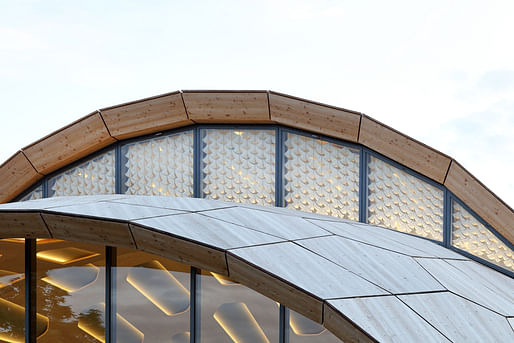
The design of the building envelope is based on the morphological principles of the plate skeleton of sea urchins, which have been researched at the University of Stuttgart for over a decade. For the pavilion, the segmental shell construction was further developed as a highly insulating structure for year-round and permanent use, with the combination of two partial shells of different shapes and sizes creating an opening skylight.
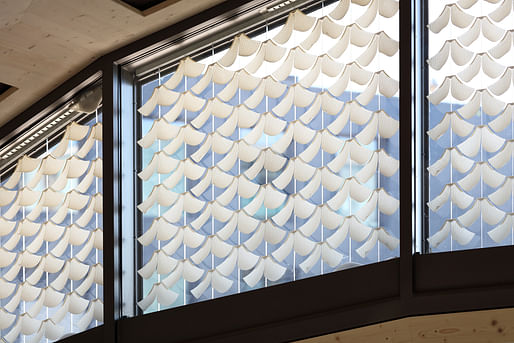
The envelope for the 2100-square-foot pavilion consists of 127 timber hollow cassettes joined together by cross-screwed joints. The hollow cassettes consist of a top and bottom layer of three-layer spruce boards as well as spruce edge beams, which are assembled as building modules.
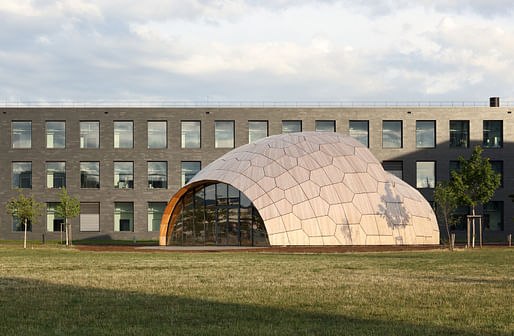
According to the team, the entire building structure is reusable, while the combination of computational design methods, robotic fabrication, and automated assembly has led to a 50% reduction in material consumption and a 63% reduction in Global Warming Potential compared to conventional timber construction.
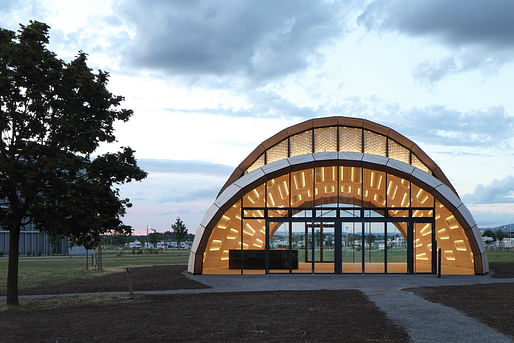
Other environmentally-conscious components within the center include a thermally activated floor slab made of recycled concrete, which works with low flow temperatures from local geothermal energy, and ensures thermal indoor comfort in the winter months while mitigating high heat loads in summer.
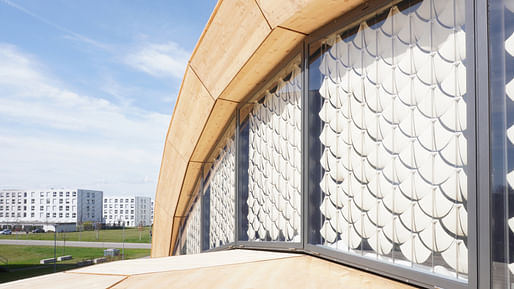
Meanwhile, the central skylight incorporates a weather-responsive shading system, developed as part of the two universities’ research into the biomimetic principle of moisture-controlled opening and closing of plant cones. The resulting ‘Solar Gate’ is comprised of 424 self-shaping shading elements made of bio-based materials and programmed using a 4D printing process.
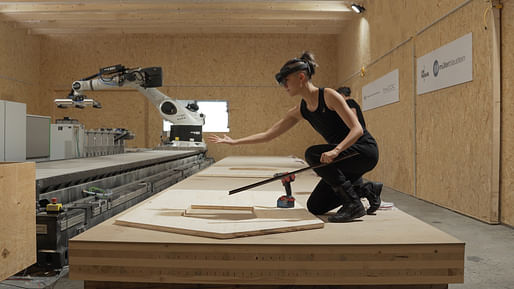
Robotic fabrication was central to both off-site and on-site construction for the center. The individual hollow timber cassettes were prefabricated using a transportable 7-axis robot platform. The components were joined on-site by a robotic spider crane that picked up components with a vacuum gripper, automatically placed them in position, and held them in place until they were automatically screwed together by a second spider crane.
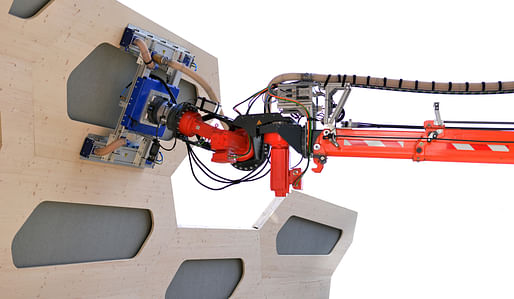
2 Comments
Ahhhhh....smell that? Yep, that's the smell of a profession moving further away from the needs of working class people.
This group has been doing these amazing timber and thin-shell pavilions for what - 10 or 15 years now?
What happens to these students? They graduate and go to work at form-making offices like ZHA or whatever? Where's the bridge between this (truly impressive) research and improving the state of the profession and people's lives?
I would really love to see them partner with a social housing developer or local people or really anyone who could help push their work to the next level. By which I mean, adding functionality, efficiency and economy, and actually building some functional buildings for real clients.
Block this user
Are you sure you want to block this user and hide all related comments throughout the site?
Archinect
This is your first comment on Archinect. Your comment will be visible once approved.